Mammals
Media

Species Types
Scientific Name
Mustela nivalis
Description
This mouse-sized weasel is found only in Missouri’s northern counties, and abundance varies locally and seasonally, depending on fluctuating rodent numbers — their favorite food.
Media
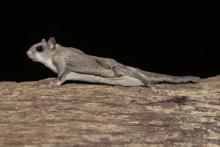
Species Types
Scientific Name
Glaucomys volans
Description
Flying squirrels don’t actually fly, but they are expert hang gliders. Instead of running around on the ground, they climb to the top of a tall tree, launch into the air, glide downward to the bottom of another tree and repeat the process to get where they’re going.
Media
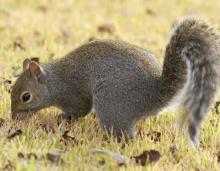
Species Types
Scientific Name
Sciurus carolinensis and Sciurus niger
Description
The eastern gray squirrel and eastern fox squirrel are both very common in Missouri. Their names describe their general coat color: the first is grayish, the other a foxy red.
Media
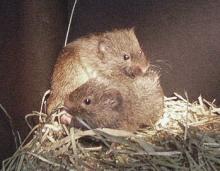
Species Types
Scientific Name
Microtus ochrogaster, M. pinetorum, and M. pennsylvanicus
Description
There are three species of voles in Missouri: prairie, meadow, and woodland voles. These mouselike rodents have rounded, blunt snouts, chisel-shaped front teeth, and short tails.
Media
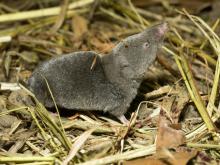
Species Types
Scientific Name
Sorex, Blarina, and Cryptotis spp.
Description
Six species of shrews occur in Missouri. They are mouselike but do not have the chisel-like front teeth of rodents. Instead, they have sharp, spiky teeth for hunting prey.
Media

Species Types
Scientific Name
Perimyotis subflavus (formerly Pipistrellus subflavus)
Description
Tri-colored bats, formerly called eastern pipistrelles, are relatively small and look pale yellowish or pale reddish brown. The main hairs are dark gray at the base, broadly banded with yellowish brown, and tipped with dark brown.
Media

Species Types
Scientific Name
Myotis grisescens
Description
Gray myotises are difficult to distinguish from other mouse-eared bats. A key identifying feature of the gray myotis is that its wing is attached to the ankle and not at the base of the toes. It’s an endangered species.
Media

Species Types
Scientific Name
Myotis sodalis
Description
The Indiana myotis, or Indiana bat, summers along streams and rivers in north Missouri, raising its young under the bark of certain trees. It is an endangered species.
Media

Species Types
Scientific Name
Myotis lucifugus
Description
The little brown myotis (little brown bat) is one of our most common bats, but populations are declining. White-nose syndrome has taken a heavy toll in northeastern states. This species is now listed as vulnerable across its range.
Media
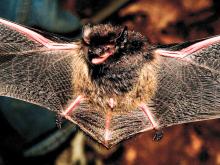
Species Types
Scientific Name
About 14 species in Missouri
Description
Bats are the only mammals capable of sustained flight. At least 14 species of bats occur in Missouri; they are all relatively small, and they eat insects. Many of them are declining.
See Also
About Mammals in Missouri
More than 70 species of wild mammals live in Missouri: opossums; shrews and moles; bats; rabbits; woodchuck, squirrels, beaver, mice, voles, and other rodents; coyote, foxes, bear, raccoon, weasels, otter, mink, skunks, bobcat, and other carnivores; deer and elk; and more. Most of us recognize mammals easily — they have fur, are warm-blooded, nurse their young, and breathe air.





















